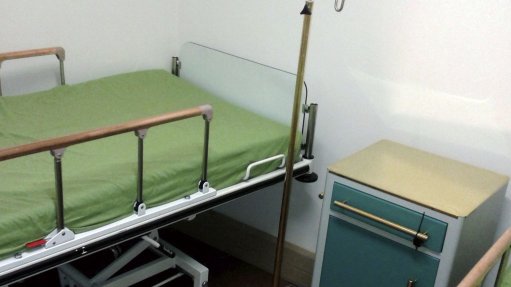
PROMOTING BENEFICICIATION The Copper Development Association Africa seeks to increase itsmembership to fund research and development initiatives into the beneficiation of copper such as antimicrobial copper surfaces in healthcare facilities
The stage is set for the expansion of copper mining activities across the Copperbelt to take advantage of the 20-million tonnes of unmined copper in the region, nonprofit organisation Copper Development Association Africa (CDAA) director Levine Warries says.
The Zambian copper mining industry, in particular, has had an extremely difficult time over the past 18 months, with load- shedding, political uncertainty and a poor copper price, but all these negatives are now something of the past, according to Warries.
“The biggest challenge for Zambia and the Democratic Republic of Congo (DRC) is to reduce the exports of their copper and start investing in infrastructure to support and develop the use of copper in downstream industries.”
According to predictions, the copper price is set to remain healthy at $6 800/t, which bodes well for the mining industry, with the CDAA wanting to be part of the exciting challenges ahead regarding copper mining and processing such as developing downstream uses of copper, the development of new mines and the expansion of existing mines, Warries says.
“All is well for now, but, if the copper price dips, which it will, [Zambia and the DRC] will be in trouble as the economies of both countries are based on the export of copper.”
She emphasises the importance of showcasing the benefits of copper. Although the CDAA has supported such initiatives, it intends to increase its presence at Copperbelt trade shows, including at conferences and exhibitions, during 2018 to explain the advantages of the copper initiatives to mines and the people in the Copperbelt region.
Aiming for Growth
The Gauteng-based CDAA has been working on growing its membership in the Copperbelt region, which stretches over the copper-rich countries of Zambia, in East Africa, and the DRC, in west Central Africa.
“Increasing CDAA membership on the Copperbelt is aimed at obtaining funds for research and development initiatives into the beneficiation of copper such as the installation of antimicrobial copper in healthcare facilities and in the aquaculture industry, which will benefit the local population and increase CDAA exposure globally,” says Warries.
CDAA membership includes being part of an international network that promotes and expands the copper industry in global markets.
The association has 40 members and includes countries such as Zambia, Swaziland, Zimbabwe and South Africa, with copper having played a significant role in their development.
CDAA members benefit from promotional and technical projects supported by the International Copper Association and its own local funding. The CDAA encourages the use of copper in Africa to develop downstream products throughout the Copperbelt region to benefit the local people and reduce unemployment.
Warries says aquaculture is the fastest-growing industry in the world and the CDAA can assist Copperbelt-based farmers of the Tilapia fish to install copper cages, which reduce biofouling, or the the accumulation of microorganisms, plants, algae or animals on wetted surfaces, thereby promoting the farming of healthier and bigger fish, which, ultimately, will reduce the fish deficit in Zambia, which stood at 60 000 t as of September.
Scientific tests have been concluded in marine and fresh water and, although the initial cost of a copper fish cage is higher than synthetic nets, the long-term advantages outweigh the upfront expense.
Another important development, Warries explains, is the installation of antimicrobial copper products in hospitals, which will reduce the bacterial bioburden by up to 83% and reduce the frequency of hospital- acquired infections.
She believes that the copper products being put forward by the CDAA can be manufactured on the Copperbelt using locally mined copper and add value to copper, which is currently being exported for beneficiation.